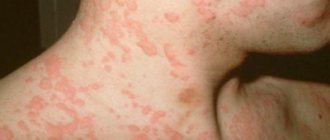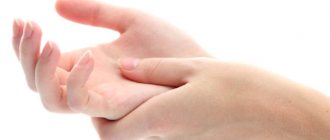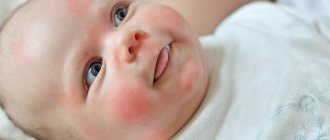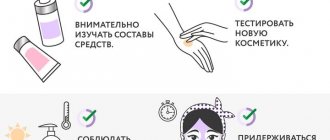How to distinguish a mild form of allergy from a severe one?
The penetration of negative agents into the body does not always require emergency assistance. It is imperative to stop allergies, but in each specific case you should act differently. A mild form of a negative reaction of the body is characterized by the following manifestations:
- rhinitis;
- allergic conjunctivitis;
- hives.
In the first case, the patient develops a runny nose. This is a pathological condition of a chronic nature that cannot be cured until the allergen is removed. Allergic rhinitis exclusively affects the mucous membranes of the sinuses. It does not spread to other parts of the body. The stronger the exposure to the allergen, the more obvious the symptoms will be. Tearfulness may be added to rhinitis.
Allergic conjunctivitis affects the organs of vision. An inflammatory process develops, swelling appears, the sclera turns red, and pus is released in the corners of the eyes.
Allergic conjunctivitis cannot be cured using the traditional method, since it is important to exclude the negative agent.
Diseases of the organs of vision develop much less frequently than rhinitis.
Mild urticaria is not dangerous. It is accompanied by a rash that appears on some parts of the body. This is a common type of allergy to medications, food, and household chemicals. If you do not reduce the concentration of the allergen in the body, urticaria will spread throughout the body. With this type of allergic reaction, a rash and itching appear. The shape of the spots usually resembles nettle marks.
Manifestations of severe allergies
The danger of such conditions is that the body’s negative reaction to a third-party agent develops very quickly. Severe allergies manifest themselves in different ways:
- Quincke's edema;
- anaphylactic shock;
- generalized urticaria.
In the first case, the functioning of the respiratory system is disrupted, and swelling occurs, making breathing difficult.
The risk of death in this case is extremely high.
Anaphylactic shock can develop with severe allergies. This condition is accompanied by a deterioration in the functioning of a number of body systems: blood circulation is disrupted and the functioning of the respiratory system becomes difficult, pressure levels change, etc. Generalized urticaria affects the entire body. It manifests itself as a rash, sometimes the size of the spots is very large. If a severe allergic reaction in the form of urticaria develops, it is usually accompanied by an acute intoxication syndrome.
Who gets sick most often?
Allergic rhinitis and bronchial asthma can be constant or periodic. It all depends on the factors that influence the development of the pathology: heredity, frequent infections, harmful production.
The disease can be provoked by a polluted environmental situation, strong odors, and nervous shock.
An attack of suffocation can develop in people of any age. It also happens in babies older than 1 year. Often the development of the disease is aggravated by heredity: close relatives of those affected suffer from allergies or asthma. Asthma in one parent determines the likelihood of a child developing it by almost 30%; if both parents have it, the chance of developing it increases to 70%. Often allergic suffocation is similar to chronic bronchitis, and treatment is carried out incorrectly. When a child gets sick with obstructive bronchitis 4 times a year, you need to urgently consult with specialists and begin examination and treatment.
According to the severity of the disease, they are distinguished:
- Mild (intermittent) form: it is characterized by daytime attacks 1 time per week, night attacks no more than 2 times a month.
- Mild persistent form: 1 time per week or per day.
- Moderate: attacks day and night.
- Severe: asthma attacks several times a day.
The disease is usually diagnosed at an appointment with a therapist or pediatrician, but to confirm the diagnosis, consultations with specialized specialists are prescribed: an allergist and an immunologist. The examination begins with identifying the allergen that caused the disease. An anamnesis is collected, the patient undergoes allergy tests, and an X-ray examination is performed. Once the pathogen is identified, comprehensive treatment is prescribed.

Mild allergy symptoms, first aid
In order not to get confused when signs of a negative reaction of the body to the penetration of a third-party agent occur, you need to get an idea of how this or that form of allergy manifests itself. Mild degree (rhinitis, conjunctivitis, urticaria, dermatitis) is usually characterized by a number of symptoms:
- itching;
- mild appearance of the rash;
- pimples and spots appear in certain areas without spreading to the entire body;
- with conjunctivitis and rhinitis, lacrimation often occurs;
- slight swelling may occur;
- with rhinitis, characteristic signs are sneezing and nasal congestion;
- if bitten by an insect, a red bump or blister will appear on the skin.
If any of the symptoms occur, it is recommended to take the following actions:
- First of all, it is necessary to eliminate the negative agent, after which the allergy attack will gradually pass.
- If rhinitis or conjunctivitis develops, additionally wash the affected area with water, which will remove some of the allergen from the skin and mucous membranes.
- After an insect bite, a sting may remain that must be removed and the contact area treated with alcohol. After this, apply a cold compress, which will help relieve swelling and reduce the intensity of itching.
- With a mild form of dermatitis, as a rule, it is enough to eliminate the allergen, and the redness will soon go away. If a child has allergies, you can treat the affected area with an ointment with antipruritic and anti-inflammatory properties. This will avoid scratching, since children do not yet know how to tolerate itching. Bepanten and Fenistil are often used.
- If an allergy appears immediately after a third-party agent enters the body, it is important to take an antihistamine. The drug of this group will not allow allergens to spread. In addition, it relieves symptoms that appear. Such drugs include Loratadine (the drug does not help immediately, as it is characterized by a cumulative effect). Suprastin is another representative of the group of antihistamines, which is characterized by a number of serious side effects, but acts quickly.
Typically, mild forms of allergies to medications and other negative agents do not require emergency measures. However, in some cases, for example, if the allergy continues to develop, it is necessary to consult a doctor who will prescribe a treatment regimen.
Causes
The occurrence of suffocation is associated with exposure to certain irritants on the body. Main allergens:
- plant pollen;
- food products (citrus fruits, honey, chocolate, meat, fish, seafood, nuts and others, more details: What foods should you not eat if you have allergies);
- medicines;
- foreign proteins;
- insect poison
Attacks do not only occur when an allergen is inhaled. Often the cause is mechanical damage to the skin (for example, a scratch or cut). Sometimes suffocation is provoked by previous infections, intense physical activity, cold exposure, strong odors, and tobacco smoke.

Signs of severe allergies, first aid
In order not to miss the moment when the victim’s condition worsens significantly, you need to know when to call an ambulance. Dangerous symptoms:
- labored breathing;
- dyspnea;
- intense vomiting, constant feeling of nausea;
- severe pain in the abdominal area;
- speech impairment, which may be caused by swelling;
- extensive redness and rash on the body;
- dizziness, general weakness;
- severe swelling, which is especially dangerous if it develops in several areas of the body;
- arrhythmia;
- loss of consciousness.
Each of the severe forms of allergies to medications and other negative factors is characterized by specific symptoms.
So, if angioedema develops, you may notice the following symptoms:
- disruption of the respiratory system (hoarseness, cough, shortness of breath, asphyxia may occur);
- severe swelling;
- an epileptic seizure, which can be caused by breathing problems.
This form of allergic reaction develops in children and adults, the cause is swelling of the mucous membranes and subcutaneous tissue. In this case, it is necessary to urgently call an ambulance, as the person may die. It is possible to alleviate his condition at home. You need to act sequentially:
- If an allergy suddenly begins, you can relieve an attack of suffocation by eliminating the negative agent that provoked this condition.
- At the same time, an antihistamine is used: orally (Loratadine, Cetirizine), if the swelling has not developed too much and the patient is able to swallow the tablet; intramuscularly (Suprastin, Diphenhydramine), if there is no other way to relieve the attack, and a negative reaction develops rapidly.
- It is not recommended to eat food, as eating in the mouth while swelling develops can cause suffocation.
- If an allergy suddenly begins, you need to know how to relieve severe intoxication. In a hospital setting, an IV is placed, but at home you can speed up the process of removing toxins using sorbents. The patient needs to take Enterosgel, Smecta, Polysorb. The last 2 remedies mentioned are characterized by the greatest effectiveness.
Urticaria symptoms, first aid
Main signs: a rash on the body, reminiscent of nettle marks, sometimes tubercles (bumps) and blisters appear. Along with this, severe itching appears. In some cases, the temperature rises. With a mild form of an allergic reaction, the spots gradually disappear on their own, but if generalized urticaria develops, the symptoms will not go away on their own, the intensity of these manifestations will increase.
In the case when the number of negative agents in the body is quite large, signs of allergy may persist for several months. Take emergency measures to relieve symptoms partially or completely. First aid for an allergic reaction manifested in the form of urticaria:
- Eliminate the allergen. Considering that urticaria often develops as a result of taking inappropriate medications, drug therapy should be stopped. If the body is exposed to a chemical, you must leave the place where you came into contact with the negative agent.
- Severe forms of urticaria must be accompanied by the use of sorbents.
- Additionally, they do an enema and wash out the stomach. It is advisable to perform these actions if the allergen entered the body through the digestive system: a product, a medication.
- Symptoms are relieved with antihistamines.
A quick treatment effect can be achieved provided that the patient is given a drip in the inpatient department of the hospital.
In this case, toxins will immediately begin to leave the body.
Symptoms of anaphylactic shock, first aid
This condition develops instantly. The causes are usually foods, insect poison, and medications.
Anaphylactic shock can be recognized by the following signs:
- swelling in the area of the organs of vision, oral cavity, respiratory tract;
- external allergy symptoms: rash, itching;
- in some cases, severe vomiting occurs and nausea is felt;
- the patient feels unreasonable fear;
- a metallic taste appears in the mouth;
- weakness, fainting due to hypotension.
If this form of allergy develops, what should you do? Basic rules that allow you to save the life of a child or adult in especially severe cases:
- If you know which allergen has entered the body, it must be eliminated.
- If a negative agent enters the digestive system, you need to rinse the stomach and do an enema.
- It is necessary to remove signs of intoxication using sorbents.
- In case of direct contact with the allergen, the skin is treated with hydrocortisone or prednisolone. In this case, drugs are used in the form of ointments.
- If intense vomiting occurs, the person should be placed on their side. In this case, it is important to exclude the possibility of swallowing the tongue or getting vomit into the respiratory tract.
- In cases where anaphylactic shock was triggered by an insect bite, the sting must be removed if it is still in the body. Then apply a tourniquet above the bite site. This measure will prevent the spread of the allergen.
- A dose of Adrenaline, Norepinephrine or Mezaton is administered.
- For anaphylactic shock, Prednisolone and glucose are indicated. Substances are administered intravenously.
- When blood pressure returns to normal, antihistamines can be given. They are recommended to be administered intramuscularly or intravenously.
Rash manifestations and first aid
A severe form of allergy can also develop with contact dermatitis and eczema. This happens for two reasons: with increased sensitivity of the body to the effects of a third-party agent of a certain type; if a person has been in contact with an allergen for a long period. Symptoms of this condition:
- an inflammatory process develops that covers the skin;
- extensive lesions appear: spots, rashes, crusts;
- the skin may peel, severe dryness occurs;
- spots and pimples gradually turn into blisters;
- in the presence of severe itching, the integrity of the rash occurs, which leads to the formation of ulcers if a secondary infection occurs;
- Often the blisters burst on their own as they grow, and then a large number of weeping wounds appear on the body.
If you are interested in the question of how to stop the development of this pathological process, you need to remember the rules for performing first aid:
- Eliminate the allergen.
- It is necessary to treat the affected areas with drugs with antipruritic, anti-inflammatory, and antiseptic properties. Therapy for such allergies should be aimed at alleviating the patient’s condition: it is important to relieve acute manifestations of the inflammatory process that develops on the skin.
- The lesions should not be washed with water.
- If compresses are made, it is permissible to use natural fabrics, since it is important to ensure air access to the affected areas of the skin.
- Take antihistamines orally. You can use local drugs, which, along with other properties, eliminate signs of allergies.
Prevention
In order to prevent suffocation due to allergies, you need to take care of prevention. The fight should go on year-round, even despite the seasonality of exacerbations. People with this problem should visit an allergist at least once a year. It is recommended to monitor new products on the pharmacological market aimed at stopping attacks.
Experts advise regularly performing breathing exercises. It has an excellent therapeutic effect and does not take much time. The exercises are aimed at training the respiratory system and establishing proper breathing. Here are some examples:
- Sitting with your eyes closed and your back straight, breathe evenly. Take a deep breath into your stomach and chest at the same time, followed by a short, sharp exhalation. Repeat 4-6 times.
- Three short breaths followed by a long exhalation. Repeat 4-6 times.
- While lying on your back, pull your knees to your chest and exhale measuredly through your mouth.
- Smooth breathing. The duration of inhalation is equal to the duration of exhalation.
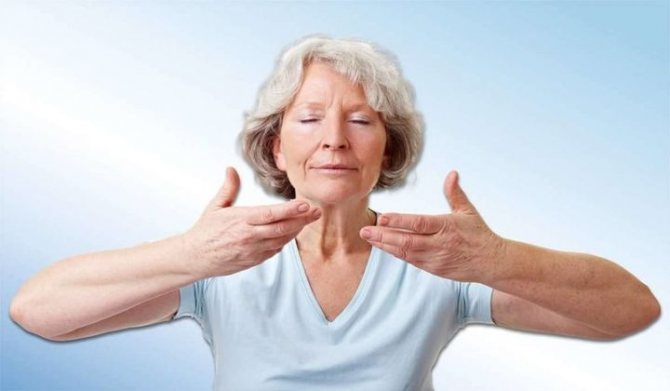
Also, an important condition will be to limit contact with dangerous allergens as much as possible. For example, a food allergy involves eliminating a number of foods from the diet. If you have a reaction to plant pollen, then avoid traveling outside the city during the active flowering season. If suffocation is caused by house dust, then regular wet cleaning of the living space and constant ventilation will help.
- Frequent walks in the fresh air (at least two hours).
- Use of air conditioners with replaceable filters in the apartment.
- Use pillows and mattresses with dust-proof coverings.
- Hardening.
- Seasonal courses of antihistamines. The dosage and duration of therapy is determined by the attending physician.
- Quitting smoking (if a person smokes).
First aid for other forms of allergies
Symptoms of a negative reaction to exposure to sunlight: rash (spots, pimples, blisters), extensive redness of areas of the outer skin exposed to ultraviolet radiation, and rough lesions appear. Most often, allergies in this form manifest themselves in the form of eczema. In this case, you need to remove the allergen - take the person away from the sun, go to a shaded place. The patient's clothing should be loose to avoid additional skin irritation.
If a person loses consciousness, he must be brought back to his senses. More fluid needs to be given. If the body temperature rises, you can use antipyretics, make cold compresses, applying them to the groin and lower leg area, to the forehead. For severe forms of allergies, ointments containing corticosteroids are used. If the allergy occurs without complications, it is better to use non-steroidal drugs: Fenistil, Desitin, Panthenol and the like. It is important to know that in this case we are talking about photodermatosis (allergy to sunlight). In this condition, antihistamines are also indicated.
How to stop an asthma attack at home
All asthmatics are terribly afraid of attacks, during which breathing is severely impaired and suffocation occurs. If such a patient is not helped in a timely manner, he may lose consciousness, fall into a coma and even die. Every asthmatic should know what to do during an asthma attack, because the ambulance may simply not have time to get there. There are several different techniques that can temporarily stop an asthmatic attack while waiting for doctors to arrive.
Features of asthma treatment
If bronchospasms begin, you can relieve them by following these instructions:
- Stop exposure to the allergen.
Asthma attacks begin after the patient has contact with a factor, an allergen, that provokes bronchospasm. When an attack is provoked by a pet, dust, mold, or smoke, you should leave the place immediately or cover your airways with a scarf, collar, or handkerchief. It is forbidden to take a lying position or bend over. This may make the cramping worse. Practice short breathing, developed by Konstantin Buteyko. This breathing technique for asthma helps to counteract bronchospasm. Typically, an asthma attack is triggered by a decrease in the level of carbon dioxide in the blood. This condition causes reflex compression of the airways. This reaction of the body is necessary to maintain balance. This breathing is performed in this way: short inhalation through the nose + short exhalation through the nose.
At the same time, you need to close your nose with your fingers and hold your breath. When signs of oxygen deficiency appear, inhale. Then we exhale as usual. Relaxation of the thoracic spine. To do this, you need to sit on a chair, turn your face to its back, and place a pillow under your chest.
If someone is near the asthmatic, he can give light strokes on the back. To ensure an influx of fresh air, the patient is freed from tight clothing.
- Drink coffee, tea. Theophylline, into which caffeine is metabolized, is used for the prevention and treatment of asthma. This substance helps to relax the respiratory tract and reduce the reaction of the bronchi to irritants.
- Staying calm.
This point is very important when relieving an asthmatic attack. Overexcitement and sharp breathing provoke tension in the muscles of the neck and pectoralis minor muscle. It is these muscle fibers that usually spasm and prevent you from taking a normal breath.
- Seek help from doctors.
If you don't know how to relieve an asthma attack in a person next to you without an inhaler, try one of the methods described above. They are very effective.
What to do if suffocation occurs?
First of all, when an attack of suffocation occurs due to an allergy, you need to call an ambulance.
Then - calm the victim. Talk to him very calmly, in a confident voice. Remember that in case of an attack of suffocation, any excitement only aggravates the situation.
It is important to determine what caused the suffocation - then the further course of action will immediately become clear.
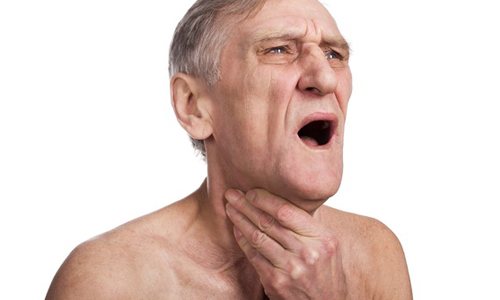
If the victim is conscious, then accompany all your manipulations with calm comments to distract the patient.
An attack of suffocation due to allergies can be recognized by some characteristic signs. During an allergic attack, in addition to suffocation, a person will most likely experience redness and increased tearing of the eyes, possibly swelling of the face and redness of the skin.
If such symptoms appear, the victim should be immediately given an antihistamine. For adults, the following products can be used:
Zodak (active ingredient cetirizine); Suprastin (active ingredient chloropyramine); Tavegil (active ingredient clemastine); Diphenhydramine (active ingredient diphenhydramine).
Also ask the victim if he has an emergency injection with him.
Often people prone to violent manifestations of allergies carry a syringe with medicine with them.
If the allergy was caused by some food product, then taking an adsorbent may help. It is important that at least half an hour passes between taking the antihistamine and the adsorbent, otherwise the antihistamine will not have time to be absorbed.
The most popular sorbents are:

